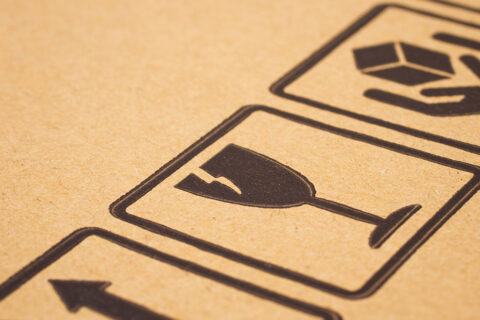However, you’ve recently learned that you need to move for work or for school, and you need to know what to do with all your old books. You worry that any mishandling could break them. You also worry that the elements could get to them, and mold could eat them while they sit in a box.
You don’t want anything to happen to your literary companions. So how do you protect them when you relocate? We’ll tell you everything you need to know.
1. Put them spine down or on their sides.
Old books often have weak spines, so you can’t depend on the spine to keep everything inside it. If you pack your books spine up, pages could fall out. The spine also has a chance of breaking because the upward position puts unnatural pressure on it. So stack your books spine down or on the side instead.
The side position gives you the best option. It doesn’t put any pressure on the spine, and it allows you to stack your books more securely. Weight will naturally fall where it should so your old book covers don’t sustain damage.
2. Put stiff cardboard between each book.
Again, sometimes old books have weak spines, as well as weak covers. Put stiff cardboard between every book to add extra support. The cardboard doesn’t have to be big, and it shouldn’t extend beyond the book and occupy more space-it just needs to span wide enough to bolster your books.
3. Wrap everything in cling wrap.
You can also protect your books further if you wrap them in several layers of cling wrap. You can wrap them individually, or you can wrap them in stacks. Just make sure you squeeze out any air. And don’t wrap your books so tightly that the plastic puts pressure on the cover.
4. Wrap everything in towels.
After you’ve added a layer of cling wrap, wrap your books in towels, scarves, or similar items. The cloth creates a protective barrier around your books so they don’t become damaged if their box falls over-or if another box falls on top of them.
5. Put your books in small boxes or suitcases.
Many people make the mistake of putting all their books in huge boxes. Books weigh a lot, so you shouldn’t use that strategy. The heavier the box, the more likely you will drop it and injure the contents. Instead, pack all your books into small boxes or suitcases.
You can use larger suitcases as long as they have wheels.
6. Fill in the spaces with packing peanuts so nothing moves.
If your books have room to shift, they could stab each other with their covers, bend pages, break spines, etc. But you can prevent any of those problems when you use packing peanuts or newspaper to fill in the gaps.
7. Label the box with the type of books inside them.
People will handle your books more carefully if you label your boxes with “antique books” and “fragile.” Your friends and neighbors don’t want to break your treasures, and your moving company certainly doesn’t either.
8. Hire people to help you carry each box one at a time.
When your friends, family, neighbors, and movers transport each book box one at a time, they reduce the risk for falls or crashes.
Even if you worry that you might sound too bossy, don’t hesitate to give people this kind of instruction to keep your books safe.
Check out the rest of our blog for more tips on moving fragile items and request a moving estimate from Bekins today!

